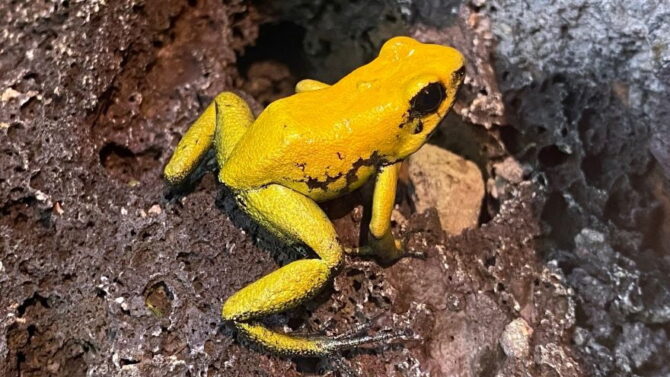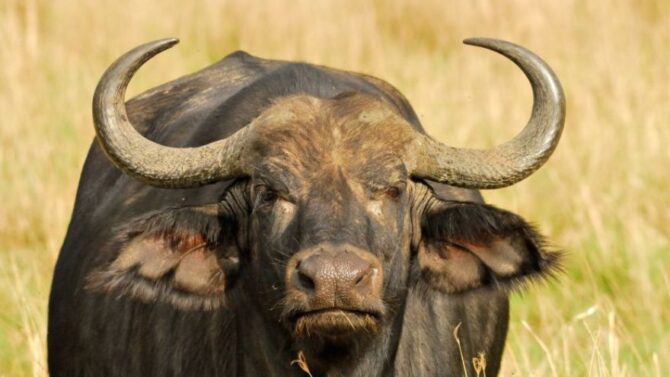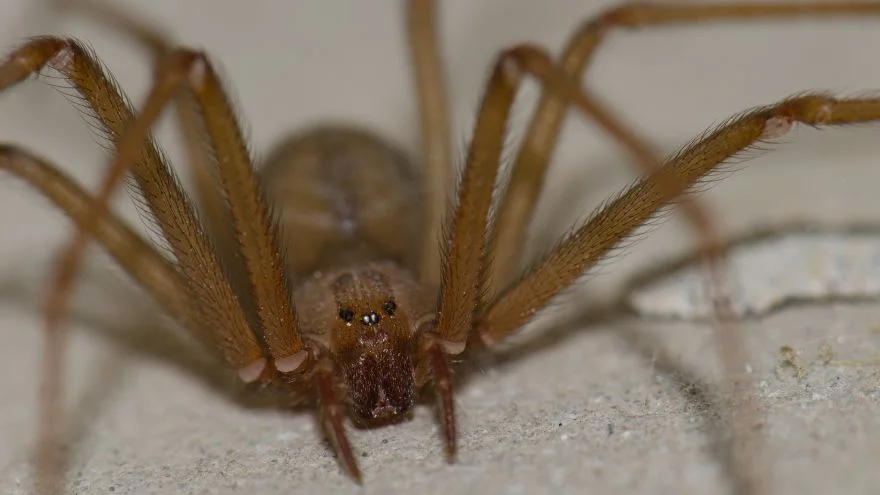The most dangerous animals in Brazil include poisonous spiders, amphibians that can kill a whole town without breaking a sweat, and deadly reptiles. So you need to take extra precautions and avoid them.
Brazil is the largest country in South America, with many wonderful varieties of living things.
It is also home to one of the world’s largest lush wetlands and rainforests, which houses a remarkable mix of plants and wildlife.
This vast environment distributes varieties of species, and it’s no surprise that most of these animals are considered deadly.
This article will provide insight into 10 of Brazil’s deadliest animals and some wildlife safety tips you should know.
What are the Most Dangerous Animals in Brazil?
1. Bull Shark
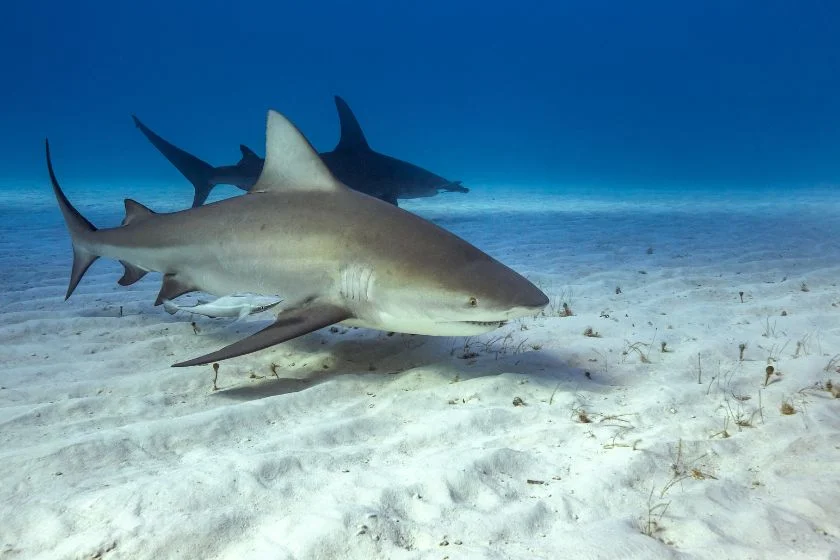
- Scientific name: Carcharhinus leucas
- Classification: Fish
- Habitat: Shallows, tropical waters, fresh water
- Diet: Carnivore
- Conservation status: Least concern
The bull shark earned its name from its hunting behavior, head-diving its prey and knocking them out like a bull.
The bull shark aside, the great white shark is the most aggressive and ruthless killer of all the sharks in Brazil.
They can grow up to 13ft in length and weigh up to 660 lbs.
Brazil has been known to have some of the most shark-infested beaches worldwide.
According to a report, about 47 shark attacks were recorded from 1992 to 2004, and 16 resulted in fatalities.
Survivors have described the attack as scary, thinking it would be the end for them because of the shark’s incredible power and vice-like grip.
Another report shows that Recife’s beach is home to some of the world’s most aggressive sharks, with over 57 shark attacks and 21 deaths in the last 20 years.
So while enjoying the beautiful beaches in Brazil, always watch out for shark warning postal before venturing into the amazing waters of Brazil.
2. Caiman
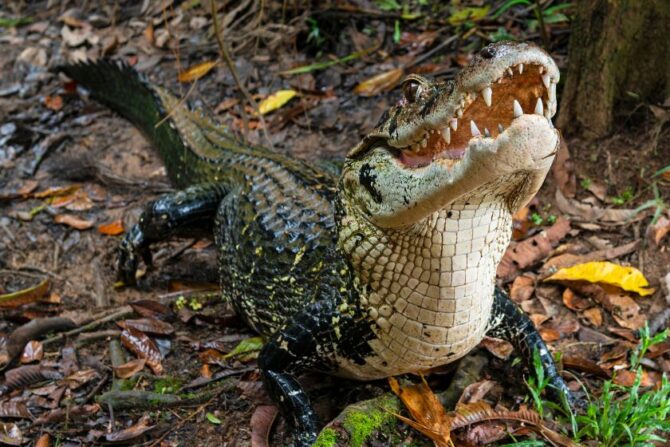
- Scientific name: Caimaninae
- Classification: Reptile
- Habitat: Rivers, lakes, swamplands
- Diet: Carnivore
- Conservation status: Least concern
Caimans, sometimes mistaken to be alligators, have broad, somewhat compressed bodies and long flat muscular tails that help them move freely and easily in water with incredible speed.
Caimans have a third eyelid that helps them see clearly and shield their eyes underwater as they are nocturnal.
Caimans can grow depending on the specie, from 1m to 6m in length and from 6kg to 500kg.
These terrifying beasts are one of Brazil’s most dreaded and vicious reptiles.
As creatures that are not picky when it comes to food, they will hurt anything that crosses paths with them, ranging from snakes, mice, big cats, and even humans.
Although these beasts are blessed with sharp razor teeth, their biggest flaw is that they can’t chew.
They swallow their prey whole (mostly smaller animals), and for bigger animals, they drag them to the bottom of the water and allow them to decompose.
As nocturnal animals, they hurt better at night, jumping on their innocent prey, crushing and drowning them.
These reptiles are known to be ruthless and will kill humans if given a chance, so it’s better to stay clear of all known caimans’ habitats when night falls.
3. Jaguar

- Scientific name: Panthera onca
- Classification: Mammal
- Habitat: Rainforest, flood plains, savannah, swamp
- Diet: Carnivore
- Conservation status: Critically endangered
Jaguars are big and strong cats with well-built bodies like a leopard.
They have a big wide head and strong jaw making them number one amongst big cats with a very powerful bite.
The pattern on a jaguar’s fur varies with location, making them blend with their environment.
These solitary animals are territorial, marking territory using clawing trees and urine, as they will fight, tear, and kill any trespasser, including other male jaguars, to defend their territory.
Jaguars love spending their time very close to the water as they are surprisingly good climbers and swimmers, meaning they will chase their prey on water, land, and trees.
Having the most powerful bites among cats, jaguars kill their prey with a mind-blowing bite to the skull.
They have really strong teeth that can penetrate even the toughest skin, making them one of the most terrifying animals in Brazil.
4. Bullet Ants
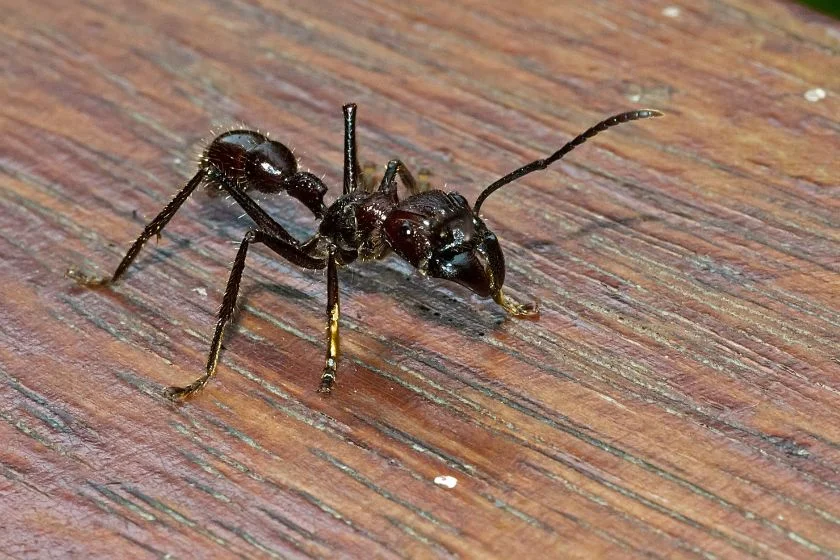
- Scientific name: Paraponera clavata
- Classification: Insect
- Habitat: Tropical forest, tree roots, tree top
- Diet: Omnivore
- Conservation status: Least concern
These reddish-brown insects covered with tiny hair are known to have one of the most painful insect bites in the world.
The sting from these 3cm insects can last for as long as 24 hours.
Although their venom doesn’t last long in the human body, people who these insects have bitten described the pain as walking on a lump of hot coal with nails grinding under your feet.
The extremely painful sting from a bullet ant contains neurotoxins that can paralyze the area surrounding the sting.
They are generally not aggressive and only attack when they feel extremely threatened and sting the attacker continuously, which causes shaking in the body, swelling in the affected area, and increased heartbeat.
However, the local uses these ants as a ritual initiation process for warriors in tribes to test their ability to endure pain.
5. Red-bellied Piranha
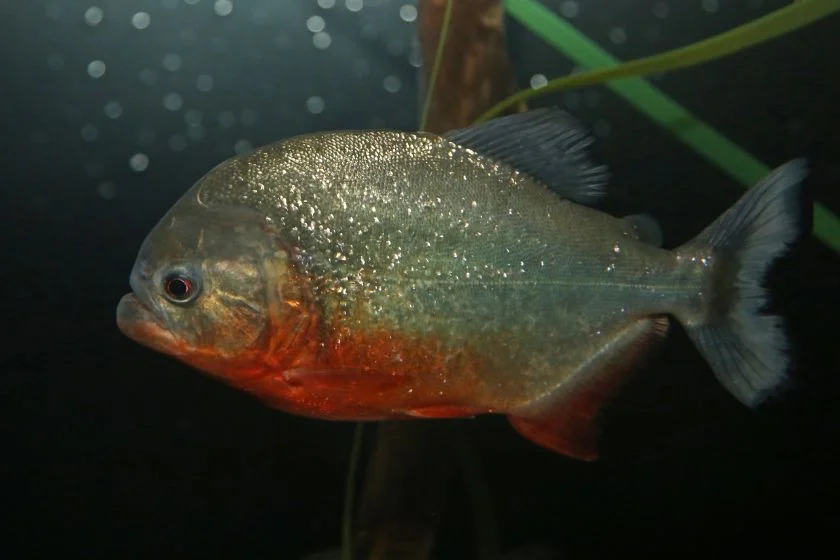
- Scientific name: Pygocentrus nattereri
- Classification: Fish
- Habitat: Rivers, lakes, reservoirs, floodplains
- Diet: Omnivore
- Conservation status: Least concern
Piranhas are small fish of about 13 inches in length and weigh over 6.6 pounds.
They have strong jaws and teeth that can tear through flesh, leaving only their victim’s bones.
As portrayed in the movie Piranha 3D, they hunt in packs, are attracted to splashing noise in the water, and are like sharks when blood is in the water.
The piranha’s teeth are razor sharp and strong, making it extremely easy to kill their prey.
Most piranhas are vegetarians and only eat small fish.
However, it’s best to stay clear of these creatures as they can attack if extremely hungry.
6. Poison Dart Frog

- Scientific name: Dendrobatidae
- Classification: Amphibian
- Habitat: Rain forest, wetlands
- Diet: Carnivore
- Conservation status: Critically endangered
The poison dart frog, as the name implies, is one of the most dangerous animals you will encounter on your trip to Brazil.
These frogs are very beautiful and dangerous; although these frogs do not have razor-sharp teeth or fangs or claws and won’t go chasing you through the rainforest, their beauty is what attracts humans to their death.
These 3 inches-long beauty secrets poison off its body and should not be touched more or less eaten.
The poison from a regular poison dart can take up to 10 minutes to become fatal, but there is a huge chance you feel nausea, paralysis, and, if unlucky, heart failure.
You will experience the golden dart frog as the most poisonous of all poison dart frogs.
The toxin from a golden dart frog is enough to kill 10 men at a go as it attacks the nervous system.
Although these frogs aren’t predators, they will innocently kill. Its skin contains a surplus of batrachotoxin, the same toxic toxin found in other dart frogs.
When contact with skin, its victim may feel shaking, paralysis, convulsion, and death.
So it’s best to keep your hands to yourself when venturing into the wild.
7. Pit Viper
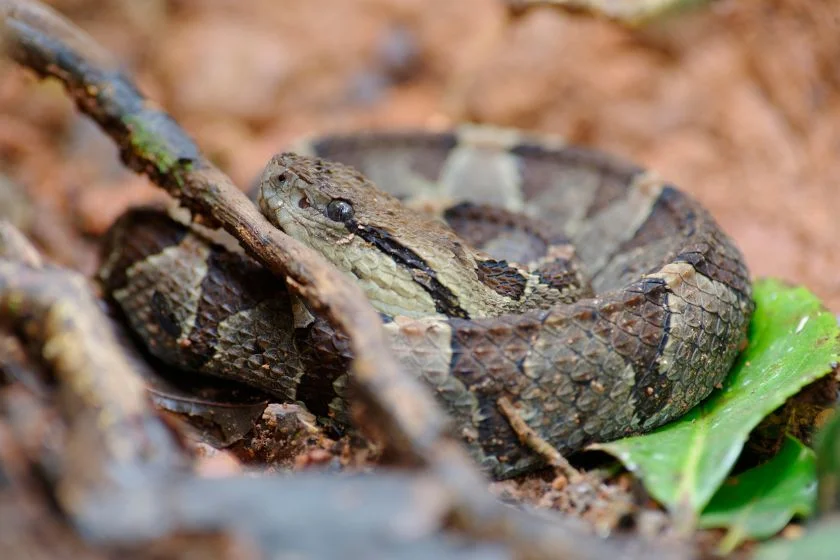
- Scientific name: Crotalus Durissus
- Classification: Reptile
- Habitat: Rainforest, swamp, floodplain
- Diet: Carnivore
- Conservation status: Least concern
The pit viper varies in location; all are extremely dangerous and poisonous.
The pit viper has two deadly toxins in its venom, the first is a neurotoxin that causes paralysis shutting down bodily functions resulting in blindness and organ failure, and the second is hemotoxin which causes bleeding.
It happens because it attacks the white blood cells in the body.
Fortunately, the pit viper is known not to be aggressive and will only bite if threatened or stepped on by intruders.
However, if bitten, it’s best to seek medical help immediately because it can be fatal if left untreated.
8. Green Anaconda
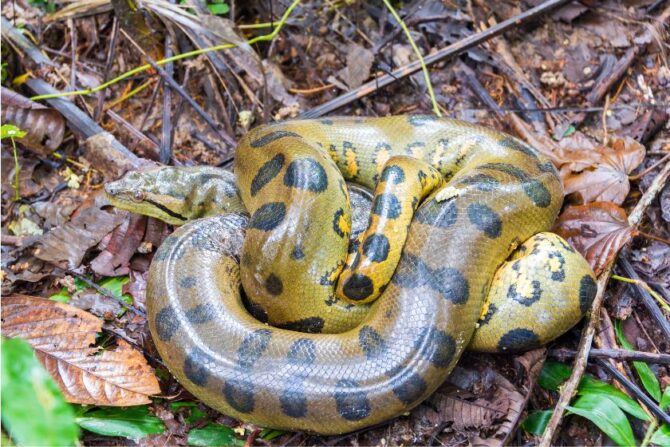
- Scientific name: Eunectes murinus
- Classification: Reptile
- Habitat: Rainforest
- Diet: Carnivore
- Conservation status: Least concern
The green anaconda is considered the biggest and heftiest reptile in the world.
These snakes don’t have venom, and they use their large size to wrap tightly as they choke their prey before eating them up wholly.
These snakes rarely threaten humans because they mostly eat once a month as it takes them a long time to swallow and even longer to digest.
However, the general idea is that you must avoid them at all costs because they will attack if threatened.
9. Vampire Bat

- Scientific name: Desmodontinae
- Classification: Mammals
- Habitat: Sub-tropic and tropical region
- Diet: Carnivore
- Conservation status: Least concern
Vampire bats, as their name implies, drink blood to survive. A vampire bat can only survive 2 days without feeding; after that, they die.
As we have learned over the years from movies, comics, and books about Dracula and his children of the night, the vampire bats are similar to the stories we have heard.
The only difference is that vampire bats don’t suck blood they lick or drink blood from their victims.
The vampire bats make a deep cut on their prey’s skin and start licking their prey’s blood with their tongue.
Their saliva contains what is known as draculin, a protein that prevents wounds from healing.
Unlike other bats, vampire bats have excellent eyesight and can spot their prey from over 100m away.
Vampire bats are known to carry rabies and can infect their prey innocently.
So if peradventure you come across a vampire bat in your travels, be very sure to avoid them by whatever means possible.
10. Brazilian Wandering Spider

- Scientific name: Phoneutria
- Classification: Arachnid
- Habitat: Rain forest, tropical wetland
- Diet: Carnivore
- Conservation status: Least concern
They are very hostile and vicious animals, commonly known as the banana spider because their usual hiding spot is banana boxes.
They were first discovered in Brazil hence the Brazilian wandering spider.
A bite from these venomous arachnids can be very lethal even to humans when bitten. Symptoms may include;
- Excessive pain,
- Swellings in the affected area,
- Fever,
- Headache and vomiting,
- Blurry vision,
- Increase in heart rate
- Organ or system failure, and
- Death.
You are therefore advised to seek medical attention if bitten.
11. Brown Recluse Spider
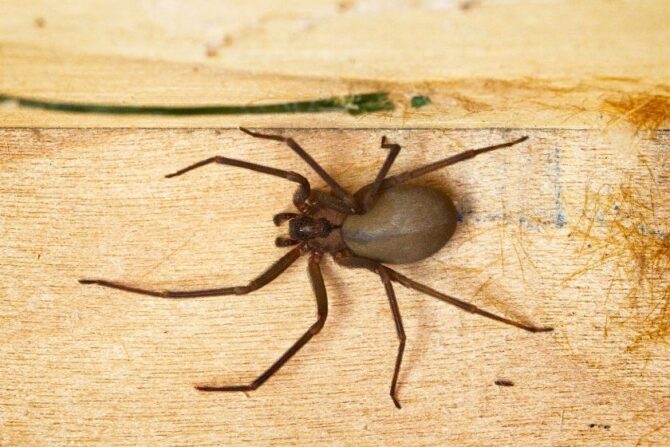
- Scientific name: Loxosceles reclusa
- Classification: Arachnid
- Habitat: Rock piles, rodent burrows, hollow tree stumps
- Diet: Carnivores
- Conservation status: Least Concern
The brown recluse spider is also known as the violin spider or fiddle-back spider because of the violin-shaped markings at the top front body section.
It may be the most dangerous of all the arachnids in Brazil not just because of its aggressive nature but also because of its bite, which has powerful venom that destroys red blood cells causing generalized tissue damage.
They hate being in the open and can attack if provoked, which makes them deadly.
A bite from a brown recluse requires immediate medical attention or first aid. Its venom contains:
- A toxin that can cause nausea
- Skin damage
- Muscle pain
- Even hemolysis (bursting of the red blood cells) in rare cases
A brown recluse doesn’t want to be friends with you, so it’s best to keep your distance.
Brazil Wildlife Safety Tips
When exploring Brazil, some boundaries are necessary to respect to ensure your safety. Ensure you follow these dos and don’ts.
They include:
- Do not swim without a guard in Brazil. Brazil’s beaches sometimes contain many dangerous animals willing to kill if the need arises. Watch out for safety signs and always follow instructions.
- No matter how beautiful or innocent an animal looks or how cuddly it seems, never touch them without the instructions of the appropriate ranger. Because some of these animals may possess poisonous toxins in their skin.
- Always watch where you step in order not to step a reptile such as snakes, gators, etc. Tap the ground with your walking stick to alert them; the noise will make them retreat.
- If you feel suspicious, seek medical help immediately or alert the appropriate officials or ranger, you might have been poisoned. Some bites do not register pain initially but could be fatal later on. Do not assure all is well.
- Always keep a safe distance between yourself and the animals. Keeping a distance of 50 feet is advisable because some animals don’t like when humans trespass into their territory.
Frequently Asked Questions
What sort of animals lives in Brazil?
Various animals live in Brazil because of its vast environment and tropical nature.
Brazil is home to tiny creatures, insects, large beasts, reptiles, and mammals, some of the world’s giant-sized animals like the capybara, a rodent, the rhea, a flightless bird, and the pink dolphin.
What is the biggest animal in Brazil?
The biggest animal in Brazil is the spectacled bear. It weighs up to 355 lbs with a height of 6 ft. they are solitary animals and live mainly on fruits as they dwell in Brazil’s cloudy forest.
What is Brazil’s most dangerous animal?
The poison dart frog is considered Brazil’s most dangerous animal. Its skin contains a toxin enough to kill 10 men.
Are there big cats in Brazil?
The answer is yes. Although Brazil is also home to the puma and ocelot, they are considered smaller cats. However, there is only one big cat in Brazil, the top predator in Brazil, the jaguar.
Conclusion
Exploring the Amazon, rainforest, or the wild in Brazil can be beautiful but understand that you must respect the animals.
These most dangerous animals in Brazil are lovely, and their presence helps to create a balance in nature.
Do not disrupt them; give them space.
